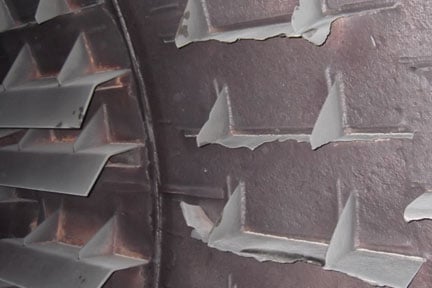Capable of causing costly damage to equipment, as well as process inefficiencies and unnecessary downtime, corrosion is a common problem faced when working with rotary dryers. This is particularly true of dryers that were not designed with corrosion in mind. Fortunately, there are several ways to protect equipment against corrosion.
Preventing Corrosion in Rotary Dryers
Various types of corrosion exist, each caused by a different kind of reaction: metal physical reactions, chemical reactions, and electrochemical reactions. Perhaps the most familiar example of corrosion is rust, where iron reacts with oxygen in the air to form iron oxide. While there is significant variance in causes and forms of corrosion, one thing is certain: corrosion is never desirable, and steps must be taken in both its prevention and treatment in rotary dryers.
Research from the World Corrosion Organization suggests that the yearly, universal cost of corrosion is approximately $2.2 trillion U.S. dollars, 25% of which could likely be eliminated through preventative care. Industrial drying professionals can utilize the following techniques to combat corrosion in their metallic equipment, including rotary dryers.
Use Corrosion-Resistant Materials in rotary dryer Manufacturing
Some metal is simply more resistant to corrosion than others. This resistance is often due to the fundamental make-up of the metal itself. Thus, when purchasing industrial drying equipment, it is imperative that the supplier understands the correlation between the material to be processed and the metal used to manufacture the dryer. For this reason, FEECO often employs stainless steels and alloys when fabricating a rotary dryer that will process a corrosive material, due to their corrosion-resistant qualities.
use Protective Coatings
Protective coatings such as specially developed paints and other organic coatings can be used on the rotary dryer itself to protect metal from corrosion. Protective coatings include epoxy ester coatings that encourage oxidation, urethane coatings, acrylic and epoxy polymer coatings, and latex coatings.
regularly Monitor dryer condition
These measures should be implemented in conjunction with careful monitoring and regular rotary dryer maintenance as recommended by the original equipment manufacturer (OEM).
Surface monitoring is especially critical in protecting against metal deterioration from corrosion. Crevices, cracks, and rough surfaces all increase the potential for corrosion. Corrosive material should not be allowed to build up or cake on to the rotary dryer or in any crevices. This is of particular importance in seasonal operating conditions, where material could be allowed to sit for prolonged periods of time, increasing the likelihood of corrosion. Careful monitoring, and elimination of these surface vulnerabilities prolongs the life of a rotary dryer and helps prevent corrosion. It is also important to avoid the use of corrosive agents in the maintenance and cleaning of rotary dryers.
Conclusion
Though corrosion is a cumbersome issue for any industrial drying operation, awareness is key. Choosing a rotary dryer manufacturer that will take into account the corrosive nature of the material to be dried is integral to achieving process efficiency and prolonging equipment life.
FEECO International has been in the thermal processing industry for over 70 years, supplying customers around the world with rotary dryers built for longevity, no matter what they are processing. Our highly trained service technicians are well versed in examining and treating corrosion issues. For more information on protecting your rotary dryer from corrosion, contact us today!

